Hyperpigmentation treatments to fade dark spots for good
Treat and prevent sun spots with these expert-approved hyperpigmentation treatments
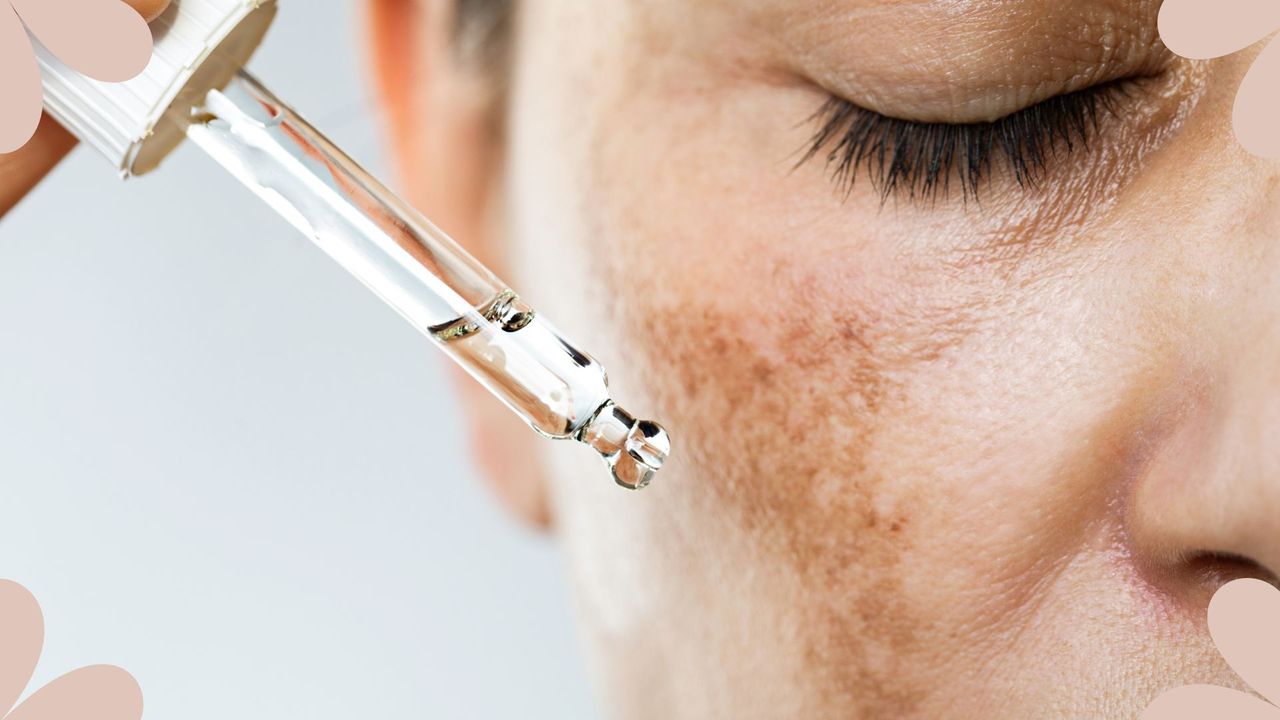
Emma North
With the arrival of autumn and winter, many of us will be looking for hyperpigmentation treatments. Pigmentation is a common skin complaint and one that really comes to the fore after the sunnier months.
It can take lots of different forms, including sun spots, melasma and post-inflammatory hyperpigmentation, and most of us will find that we experience it in some guise and to some degree during our lives. “As we age, unwanted changes in skin pigmentation are common in all skin tones,” says consultant dermatologist Dr Justine Hextall. “Particularly in areas of high sun exposure, such as the face and hands.”
Prevention is always better than cure, so our first piece of advice is to follow a skincare routine that focuses on warding off these darker patches of skin before they form. A key part of this is making sure you’re wearing the best facial sunscreen every single day, even during the summer months.
If your hyperpigmentation is established, don’t stress. There are plenty of options for treatments, ranging from including the best vitamin C serum and best retinol cream at home, to trialling in-clinic options like chemical peels and specialist lasers.

Dr Hextall is a Consultant Dermatologist and has been working in the NHS for more than a decade. She is the medical director of the Tarrant Street Clinic and an expert in rosacea, acne and skin cancer.
What is hyperpigmentation?
“Hyperpigmentation is a common skin condition in which some parts of the skin become darker than others,” explains Dr Derrick Phillips, Consultant Dermatologist working with CeraVe. It happens when melanocytes, the cells in our skin responsible for making melanin (the pigment that gives our skin its colour) malfunction and make more than is needed. “Melanin deposited in the top layers of the skin creates a light to dark brown tone, but if the melanin is deposited deeper in the skin, it can produce a grey discolouration.” It’s not painful, but can make people self-conscious.
Why does it happen? “Hyperpigmentation can result from various factors, including sun exposure, hormonal changes, inflammation, acne and injuries,” Dr Ifeoma Ejikeme, medical consultant, skin expert and founder of Adonia Medical Clinic.
The most common type of hyperpigmentation is sun spots (also known as age and liver spots). They are caused by sun damage and can crop up either immediately after sun exposure or appear years later. They’re most common in sun-exposed areas, which is why so many people want to know how to treat age spots on hands.
Sign up for the woman&home newsletter
Sign up to our free daily email for the latest royal and entertainment news, interesting opinion, expert advice on styling and beauty trends, and no-nonsense guides to the health and wellness questions you want answered.
Another type of hyperpigmentation is melasma, which “is deeper set than other forms of hyperpigmentation and usually presents itself in patches on the face," says Nilam Holmes, skin specialist and Dermaspa founder. "This is mostly seen on the cheeks, upper lip, and forehead in a symmetrical pattern and often also referred to as butterfly pigmentation." Pregnancy and menopause are key times when melasma may appear, and unfortunately “because it is caused by internal factors like hormone changes, it only affects women and is harder to treat," explains Holmes.
Hormones and sunshine aside, another key trigger of hyperpigmentation is inflammation and trauma to the skin, which is why it can be left behind by spots, cuts and conditions like eczema and psoriasis. This kind is known as post-inflammatory hyperpigmentation. Remember, the more you pop, prod or poke at blemishes, the more likely they are to leave post-inflammatory pigmentation behind.

Dr Phillips is a Consultant Dermatologist based in London. He specialises in all areas of skin health, from acne to rosacea.

Dr Ifeoma Ejikeme is a consultant, skin expert and founder of the Adonia Medical Clinic. She was voted Best Aesthetic Doctor in the UK for 2023.
Hyperpigmentation treatments, and how to pick the best one for you
The type of hyperpigmentation treatments that will best suit your skin will depend on the cause and severity of the marks, as well as your skin tone and whether you have the budget to go pro. When researching hyperpigmentation treatments, consider the following:
- Skin tone: If you have a deeper skin tone you need to be more considered when choosing hyperpigmentation treatments, compared to those with a lighter skin tone, as the risk of overproducing melanin is higher. This is due to two factors. Firstly, there is more melanin naturally present in deeper complexions, and secondly, inflammation shows in melanin-rich complexions as hyperpigmentation rather than redness. Some treatments, including lasers, can worsen pigmentation if used incorrectly so ensure you're visiting an expert who knows what they're doing.
- Type of pigmentation: UV-induced hyperpigmentation like sun spots has the most treatment options, including skincare ingredients such as Vitamin C, laser treatments, and peels using skincare acids. Post-inflammatory pigmentation, on the other hand, requires more careful hand, and specific anti-inflammatory treatments and ingredients. Hormonal melasma is the trickiest of all to treat, partly because it tends to sit in the deeper layers of the skin. "There is very little that can be done to remove melasma but it can be managed by balancing hormones and the effects can be limited by using certain treatments and sun protection," explains Nilam Holmes, skin specialist and Dermaspa founder.

Nilam Holmes is a skin and beauty expert with more than 30 years of experience in the industry.
How to treat hyperpigmentation: A step by step guide
Step 1: Wear SPF every day
Unsurprisingly, the single best thing you can do to tackle pigmentation is to wear sun protection and avoid direct sun exposure. Even the best skincare products and hyperpigmentation treatments won't be worthwhile unless you're wearing sunscreen 365 days a year. No excuses.
“Using a broad-spectrum sunscreen of at least SPF30+, with 5-star UVA protection and high-energy visible light coverage will protect against hyperpigmentation and prevent affected areas from getting darker,” explains Consultant Dermatologist Dr Derrick Phillips. “Prevention is easier than reversal. It’s also important to avoid excessive sun exposure by staying in the shade between 11am and 3pm when the sun is at its strongest, wearing protective clothing such as a wide-brimmed hat or cap, and, most importantly, reapplying sunscreen every two hours.”
If you find daily SPF hard to stick with because you don’t like the way most of them feel, you probably haven't found the right formula yet. They’ve come a long way from the thick, paint-like formulas of our youth, and now there are great options among the hardest-to-please skin types, including the best sunscreens for sensitive skin, best sunscreens for oily skin and best sunscreens for acne-prone skin. And of course, don’t forget your best SPF lip balm to keep your pout protected.

Eucerin Hydro Protect Ultra-Light Fluid SPF50+ | RRP: £15
If you hate the feeling of sticky sunscreen, this is for you. It’s super lightweight and absorbs into the skin beautifully with no greasy residue. Great for pigmentation, UV filters are combined with extra antioxidants to shield skin.
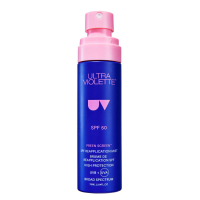
Ultra Violette Preen Screen SPF Reapplication Mist SPF50 | RRP: £32
Re-applying SPF during the day is difficult to do without dislodging your makeup, which is why spray formulas are so handy. Pop this high-protection mist in your bag and give your complexion a spritz every hour or so.
Step 2: Use targeted active ingredients
Plenty of products claim to fade pigmentation but there are only a few ingredients that we really know work. A steady regime combining these with sunscreen should yield results in a matter of months.
Vitamin C
Using a vitamin C serum offers powerful antioxidant protection against UV light, among other benefits. “Vitamin C is a great skin-brightening ingredient and interferes with pigment production at various stages,” explains Dr Phillips. “It also boosts collagen production and protects against harmful environmental free radicals that accelerate the ageing process.” To shield your skin, we recommend using it during the day, but vitamin C can also be applied before bed to help even and fade pigmentation while you snooze.
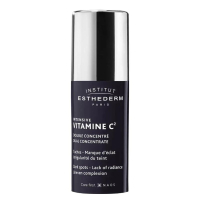
Institut Esthederm Intensive Vitamin C Dual Concentrate Brightening Booster Serum | RRP: £35
A glow-giving antioxidant serum that contains not one, but two types of vitamin C to even your complexion fast.
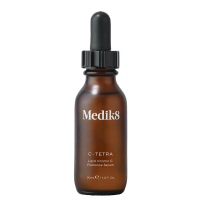
Medik8 C-Tetra Lipid Vitamin C Radiance Serum | RRP: £39
If you’ve previously found vitamin C products either sensitise your skin or give you spots, let us reassure you this will do neither. It uses a stabilised form that’s suitable for all complexions.
Tyrosinase inhibitors
Without getting too technical, in order for hyperpigmentation to form, the skin needs to make a particular enzyme called tyrosinase. So to prevent pigmentation from occuring, you want to stop that from happening. There are a group of ingredients that are considered to be tyrosinase inhibitors, and the most commonly used and well-researched of these include niacinamide (aka Vitamin B3), azelaic acid, tranexamic and kojic acid. “Niacinamide and Azelaic Acid disrupt pigment formation by suppressing the enzyme tyrosinase, which is a key cog in the production of melanin,” explains Dr Philips. “Both ingredients have anti-inflammatory properties, making them ideal for treatment of acne-related pigmentation. Kojic acid and Bearberry are naturally occurring tyrosinase suppressors and are often included in anti-pigmentation formulations.”
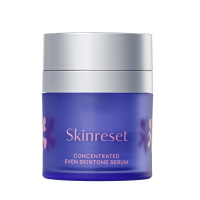
Emma Lewisham Skin Reset Face Serum | RRP: £90
A hero in a tub, this serum uses more than 20 different actives to even skin tone and reduce the appearance of hyperpigmentation. Developed by physiologists, the formula includes niacinamide alongside hyaluronic acid and vitamin C.
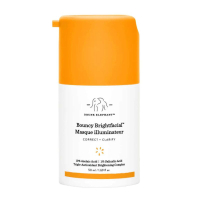
Drunk Elephant Bouncy Brightfacial Mask | RRP: £60
Powered by tyrosinase inhibitor azelaic acid and supported by acid exfoliant salicylic acid, this is a flash-fix for redness and hyperpigmentation. It’s called a mask but is more of a moisturiser, designed to be the last step in your day or night routine.
Acid exfoliators
These work to shift old cells and reveal fresh new ones for improved clarity. "Products that contain Alpha Hydroxy Acids (AHAs) help to exfoliate dead and hyper-pigmented cells to stimulate the production of new cell growth," says Dr Murad, dermatologist and founder of Murad skincare. Look for glycolic acid, lactic acid, or for sensitive skin and post-inflammatory hyperpigmentation, gentler mandelic acid.
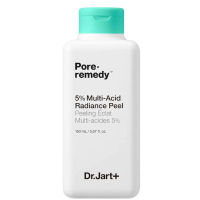
Dr. Jart+ Pore Remedy 5% Multi-Acid Radiance Peel | RRP: £30
Promising the effects of a chemical peel but with none of the downtime or redness, this blends alpha-hydroxy acids with beta-hydroxy acids to reveal your freshest complexion yet.
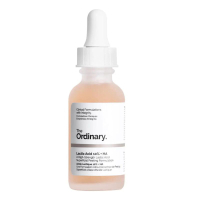
The Ordinary Lactic Acid 10% + HA | RRP: £7.90
If you want to dip your toe into the world of exfoliating acids without breaking the bank, try this serum. It’s still quite a high concentration, so use it a couple of times a week to begin with.

Best known for his eponymous skincare line, Dr Murad is a dermatologist, pharmacist and clinical professor.
Retinoids
“Retinoids are a key ally in the treatment of hyperpigmentation,” advises Dr Phillips. “They are a group of compounds related to vitamin A that exert a number of key effects on the skin. Retinoids exfoliate the skin, renewing the top layer and lifting away superficial pigment in the process. They also suppress pigment production and enhance the effects of other anti-pigment ingredients.”
Retinoids pack a punch, so it’s important to understand how to use retinol and introduce them to your routine slowly. “It can take for your skin to adjust to retinoids, and therefore as a rule of thumb start with a low concentration and apply one or two nights a week, building up over time,” adds Dr Phillips. “Applying a gentle moisturiser after the product can reduce irritation.” How often you should use retinol will ultimately depend on how sensitive your skin is – some people can tolerate it every night, while for others just twice a week is enough. Remember too that retinoids are a nighttime-only ingredient and can increase sun sensitivity, making that daily sunscreen all the more important.
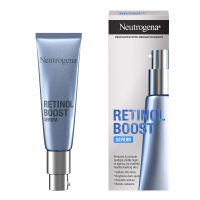
Neutrogena Retinol Boost Serum | RRP: £24.49
An affordable way to give retinol a go, this silky serum has all-round benefits for the skin, including smoothing wrinkles and improving firmness, as well as whisking away hyperpigmentation marks.
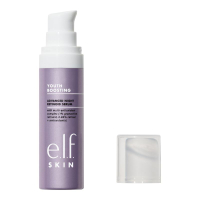
e.l.f Skin Youth Boosting Advanced Night Retinoid Cream | RRP: £22
There are different forms of retinoid, and this serum contains retinal. It’s one of the most potent forms with the added pro of being less irritating than its more commonly used relative retinol.
Step 3: Try a prescription product
If you’re finding that off-the-shelf skincare isn’t making much of a difference to your hyperpigmentation, we recommend going down the prescription route. As they are drugs, rather than cosmetics, prescription skincare contains a higher concentration of active ingredients than anything you can buy in-store. And, as a result, can only be prescribed under the guidance of a medical professional. “In clinic, some forms of hyperpigmentation can be treated with special prescription formulations containing the potent skin lightening agent hydroquinone,” explains Dr Phillips. “Hydroquinone-based products should only be used under the guidance of a consultant dermatologist.” If you’re put off by the skin-lightening qualities, don’t worry, hydroquinone isn’t the only option. Experts regularly prescribe azelaic and tranexamic acids too.
Obviously visiting a dermatologist is expensive, and not something that everyone can afford. The next best thing is a dermatologist-led, skincare subscription service like Klira or Skin + Me. Both require you to fill out a form detailing your skin concerns and some medical history, before uploading photos of your hyperpigmentation. Then, armed with this information, their in-house experts can prescribe you a tailored treatment. You’ll have access to these experts for advice throughout your journey too, with the option to ask questions and submit photographs. In some cases, they’ll start you on a lower dose, and increase the strength as your skin adapts to the new treatment.
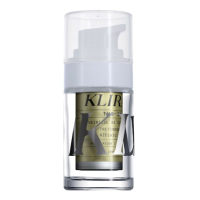
Klira | From £49 a month
Founded by consultant dermatologist and President of the British Cosmetic Dermatology Group, Dr Emma Craythorne, this is a brand you can trust. It’s based on an advanced system that assigns you a SkinSize based on the cellular function and needs of your skin.
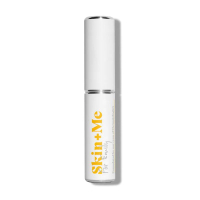
Skin + Me | From £29.99 a month
The team behind Skin + Me is made up of dermatologists, pharmacists and other skincare experts who believe that truly effective skincare solutions should be available for everyone.
Step 4: Opt for an in-clinic hyperpigmentation treatment
We talk a lot about how pigmentation is hard to shift, but that’s not to say there aren’t effective professional treatments that can make a real difference. "Dermatological procedures will work as the fastest way to get rid of hyperpigmentation. Chemical facial peels, laser therapy, microdermabrasion, or dermabrasion are all options that work similarly to rid skin of hyperpigmentation," says dermatologist Dr Elif Benar.
Holmes is also a fan of pro hyperpigmentation treatments. "Treatments such as IPL and microneedling are all very effective in reducing hyperpigmentation. I have found I can clear hyperpigmentation by at least 90% within two treatments using the Lumecca IPL system" (find about more about Lumecca in our tweakments guide). "Results can be permanent too if the clients protect themselves from future sun damage."
Aesthetics doctor, Tara Francis agrees that IPL is the gold standard. "IPL involves the delivery of specific wavelengths of light that interact with red and brown pigments in the skin. These pigments absorb the light and are destroyed, often in one session."
As we have previously mentioned, if you have a deeper skin tone, some pro treatments can worsen pigmentation. Take care to find an experienced practitioner – using personal recommendations is always a good place to start. "It is more complex to treat hyperpigmentation in darker skin tones that produce much more melanin," Holmes continues. "Because treatments tend to cause heat and inflammation there is a higher risk of increasing hyperpigmentation in these skin types. I tend to use treatments such as gentle peels, microneedling or skin rejuvenation such as Morpheus 8 in much darker skin tones."

As well as being a dermatologist to the stars, Dr Benar also works as an aesthetic doctor.

Tara Francis is a qualified dentist and aesthetician. She specialises in natural-looking results to enhance her patient’s features.
Step 5: If all else fails, conceal
A solid skincare routine and a professional treatment can do a lot, but you're unlikely to completely eradicate dark spots – and improvements do take time. In the meantime, one of the best drugstore concealer is absolutely the way to go.
Firm, pot-based concealers often have the edge for full cover (making them a lifesaver for the occasional blemish). However, if you have larger areas of pigmentation then a creamier formula that's spreadable and almost foundation-like in consistency will look more natural. Unlike your undereye concealer, which you may prefer a shade lighter to brighten, ensure concealer for pigmentation matches the area of skin with the pigmentation exactly. This means a bit of trial and error as testing on your hand isn't going to cut it.
If you haven't mastered how to apply concealer, picking a product with a doe foot applicator makes smooth application much easier. Dot onto the area you wish to conceal then follow the golden rule with any concealer – which is pat, don't rub. This ensures the coverage stays where you put it without blending away into nothingness. A dusting of setting powder on top will make it ultra-budge-proof.
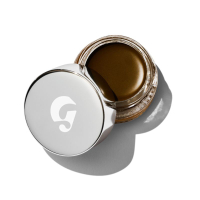
Glossier Stretch Balm Concealer | RRP: £20
This is great for blurring dark marks without making the skin look cakey or unnatural. The initial coverage is quite light, but it’s easy to build with a glowing finish.
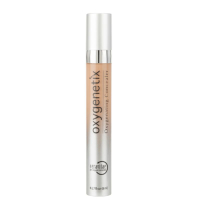
Oxygenetix Oxygenating Concealer | RRP: £50
A real coverage powerhouse, this is the ultimate concealer for reducing the appearance of hyperpigmentation. It works a treat on dark circles, redness and prominent veins too.
Are freckles pigmentation?
Freckles always cause confusion, but essentially, yes, they are a form of hyperpigmentation. “Freckles are probably the most recognisable type of hyperpigmentation,” says Dr Phillips. “They appear as small, dark brown spots, usually less than 3mm in size.” They look quite similar to sun spots and it’s easy to get muddled as to which one you have. The main giveaway between the two is that freckles tend to appear in custers, rather than individually. And, if you’re prone to freckles, you’ve probably had them since childhood, and your family members have them too.
“Genetics play an important part in determining who develops freckles,” continues Dr Phillips. “They typically occur in fair-skinned people, particularly children with red hair, but can also occur in darker skin tones. Freckles are more prominent during the summer months and fade during the winter months when there is less UV exposure.”
How long will it take for hyperpigmentation to fade?
Questioning how long it takes for hyperpigmentation to fade is the beauty equivalent of asking how long a piece of string is. “The time it takes for hyperpigmentation to fade varies on factors like skin type, treatment approach and the individual’s response to treatment,” says Dr Ejikeme. “Mild cases might improve within a few weeks, while more stubborn cases could take several months of consistent treatment.”
“When hyperpigmentation involves the deeper layers of the skin, called the dermis, it produces a dark grey discolouration that can be challenging to treat.”
Says Dr Phillips. “Hyperpigmentation, the top layers of the skin, involving the epidermis can be effectively treated with skincare, topical medications and chemical peels in weeks to months.”
If you’re serious about fading hyperpigmentation, the most important thing is to make sure you’re not doing anything that will cause it to deepen, or create more marks. Make sure you’re shielding your skin from UV rays with daily sunscreen and avoid anything that could irritate the skin and lead to inflammation.
Can hyperpigmentation fully go away?
If persistent hyperpigmentation is getting you down, then let us reassure you that it is possible to fully remove marks. It’s just about being patient and open to exploring different treatment routes. “Mild cases of hyperpigmentation, often caused by temporary factors like sun exposure, may gradually fade over time,” says Dr Ejikeme. “However, more persistent or severe cases typically require treatment to achieve significant improvement.”
The key to sending hyperpigmentation packing for good, before you even look to treatment options, is to identify what’s triggering it and make sure that is no longer a factor. “In most cases of post-inflammatory hyperpigmentation the underlying skin problem, such as acne, eczema or psoriasis, will need to be addressed to prevent new dark patches developing,” explains Dr Phillips. “Melasma, a form of hyperpigmentation related to oestrogen, will usually require treatment.” Depending on your situation, it may be that your doctor recommends a change in contraception, or suggests hormone replacement therapy. If it’s UV exposure that’s triggering your hyperpigmentation then you’ll need to be extra vigilant with sunscreen, and ideally, wear a hat with a brim, to protect existing marks from deepening and new ones from forming.
Can I treat hyperpigmentation naturally?
If you’re wondering if you can treat hyperpigmentation naturally, we assume you mean without the intervention of prescription-strength skincare and in-clinic treatments like chemical peels and lasers. The answer is that you can, but it will take time to see results, and you may never be completely free of any kind of mark in the area. “In most cases, hyperpigmentation and dark spots will gradually fade on their own,” says Dr Phillips. “But this can take time and treatments will speed up the fading of hyperpigmentation marks. It’s highly unlikely that pigmentation will fade evenly of its own accord without leaving a trace.”
If having a completely clear complexion is your priority, then we’d suggest enlisting the help of a dermatologist. “If you’re seeking significant results, especially for moderate to severe hyperpigmentation, then consulting a doctor for appropriate treatment options is recommended,” says Dr Ejikeme.
Although undeniably tricky to treat, we hope we've helped you to see that there is light (and clear skin) at the end of the tunnel with hyperpigmentation. Whether you're experiencing your first sun spot or frustrated with long-term melasma, want to spend just £20 or splash out hundreds on in-clinic treatments, there are plenty of effective options available.
With the arrival of autumn and winter, many of us will be looking for hyperpigmentation treatments. Pigmentation is a common skin complaint and one that really comes to the fore after the sunnier months.
It can take lots of different forms, including sun spots, melasma and post-inflammatory hyperpigmentation, and most of us will find that we experience it in some guise and to some degree during our lives. “As we age, unwanted changes in skin pigmentation are common in all skin tones,” says consultant dermatologist Dr Justine Hextall. “Particularly in areas of high sun exposure, such as the face and hands.”
Prevention is always better than cure, so our first piece of advice is to follow a skincare routine that focuses on warding off these darker patches of skin before they form. A key part of this is making sure you’re wearing the best facial sunscreen every single day, even during the summer months.
If your hyperpigmentation is established, don’t stress. There are plenty of options for treatments, ranging from including the best vitamin C serum and best retinol cream at home, to trialling in-clinic options like chemical peels and specialist lasers.

Dr Hextall is a Consultant Dermatologist and has been working in the NHS for more than a decade. She is the medical director of the Tarrant Street Clinic and an expert in rosacea, acne and skin cancer.
What is hyperpigmentation?
“Hyperpigmentation is a common skin condition in which some parts of the skin become darker than others,” explains Dr Derrick Phillips, Consultant Dermatologist working with CeraVe. It happens when melanocytes, the cells in our skin responsible for making melanin (the pigment that gives our skin its colour) malfunction and make more than is needed. “Melanin deposited in the top layers of the skin creates a light to dark brown tone, but if the melanin is deposited deeper in the skin, it can produce a grey discolouration.” It’s not painful, but can make people self-conscious.
Why does it happen? “Hyperpigmentation can result from various factors, including sun exposure, hormonal changes, inflammation, acne and injuries,” Dr Ifeoma Ejikeme, medical consultant, skin expert and founder of Adonia Medical Clinic.
The most common type of hyperpigmentation is sun spots (also known as age and liver spots). They are caused by sun damage and can crop up either immediately after sun exposure or appear years later. They’re most common in sun-exposed areas, which is why so many people want to know how to treat age spots on hands.
Another type of hyperpigmentation is melasma, which “is deeper set than other forms of hyperpigmentation and usually presents itself in patches on the face," says Nilam Holmes, skin specialist and Dermaspa founder. "This is mostly seen on the cheeks, upper lip, and forehead in a symmetrical pattern and often also referred to as butterfly pigmentation." Pregnancy and menopause are key times when melasma may appear, and unfortunately “because it is caused by internal factors like hormone changes, it only affects women and is harder to treat," explains Holmes.
Hormones and sunshine aside, another key trigger of hyperpigmentation is inflammation and trauma to the skin, which is why it can be left behind by spots, cuts and conditions like eczema and psoriasis. This kind is known as post-inflammatory hyperpigmentation. Remember, the more you pop, prod or poke at blemishes, the more likely they are to leave post-inflammatory pigmentation behind.

Dr Phillips is a Consultant Dermatologist based in London. He specialises in all areas of skin health, from acne to rosacea.

Dr Ifeoma Ejikeme is a consultant, skin expert and founder of the Adonia Medical Clinic. She was voted Best Aesthetic Doctor in the UK for 2023.
Hyperpigmentation treatments, and how to pick the best one for you
The type of hyperpigmentation treatments that will best suit your skin will depend on the cause and severity of the marks, as well as your skin tone and whether you have the budget to go pro. When researching hyperpigmentation treatments, consider the following:
- Skin tone: If you have a deeper skin tone you need to be more considered when choosing hyperpigmentation treatments, compared to those with a lighter skin tone, as the risk of overproducing melanin is higher. This is due to two factors. Firstly, there is more melanin naturally present in deeper complexions, and secondly, inflammation shows in melanin-rich complexions as hyperpigmentation rather than redness. Some treatments, including lasers, can worsen pigmentation if used incorrectly so ensure you're visiting an expert who knows what they're doing.
- Type of pigmentation: UV-induced hyperpigmentation like sun spots has the most treatment options, including skincare ingredients such as Vitamin C, laser treatments, and peels using skincare acids. Post-inflammatory pigmentation, on the other hand, requires more careful hand, and specific anti-inflammatory treatments and ingredients. Hormonal melasma is the trickiest of all to treat, partly because it tends to sit in the deeper layers of the skin. "There is very little that can be done to remove melasma but it can be managed by balancing hormones and the effects can be limited by using certain treatments and sun protection," explains Nilam Holmes, skin specialist and Dermaspa founder.

Nilam Holmes is a skin and beauty expert with more than 30 years of experience in the industry.
How to treat hyperpigmentation: A step by step guide
Step 1: Wear SPF every day
Unsurprisingly, the single best thing you can do to tackle pigmentation is to wear sun protection and avoid direct sun exposure. Even the best skincare products and hyperpigmentation treatments won't be worthwhile unless you're wearing sunscreen 365 days a year. No excuses.
“Using a broad-spectrum sunscreen of at least SPF30+, with 5-star UVA protection and high-energy visible light coverage will protect against hyperpigmentation and prevent affected areas from getting darker,” explains Consultant Dermatologist Dr Derrick Phillips. “Prevention is easier than reversal. It’s also important to avoid excessive sun exposure by staying in the shade between 11am and 3pm when the sun is at its strongest, wearing protective clothing such as a wide-brimmed hat or cap, and, most importantly, reapplying sunscreen every two hours.”
If you find daily SPF hard to stick with because you don’t like the way most of them feel, you probably haven't found the right formula yet. They’ve come a long way from the thick, paint-like formulas of our youth, and now there are great options among the hardest-to-please skin types, including the best sunscreens for sensitive skin, best sunscreens for oily skin and best sunscreens for acne-prone skin. And of course, don’t forget your best SPF lip balm to keep your pout protected.

Eucerin Hydro Protect Ultra-Light Fluid SPF50+ | RRP: £15
If you hate the feeling of sticky sunscreen, this is for you. It’s super lightweight and absorbs into the skin beautifully with no greasy residue. Great for pigmentation, UV filters are combined with extra antioxidants to shield skin.

Ultra Violette Preen Screen SPF Reapplication Mist SPF50 | RRP: £32
Re-applying SPF during the day is difficult to do without dislodging your makeup, which is why spray formulas are so handy. Pop this high-protection mist in your bag and give your complexion a spritz every hour or so.
Step 2: Use targeted active ingredients
Plenty of products claim to fade pigmentation but there are only a few ingredients that we really know work. A steady regime combining these with sunscreen should yield results in a matter of months.
Vitamin C
Using a vitamin C serum offers powerful antioxidant protection against UV light, among other benefits. “Vitamin C is a great skin-brightening ingredient and interferes with pigment production at various stages,” explains Dr Phillips. “It also boosts collagen production and protects against harmful environmental free radicals that accelerate the ageing process.” To shield your skin, we recommend using it during the day, but vitamin C can also be applied before bed to help even and fade pigmentation while you snooze.

Institut Esthederm Intensive Vitamin C Dual Concentrate Brightening Booster Serum | RRP: £35
A glow-giving antioxidant serum that contains not one, but two types of vitamin C to even your complexion fast.

Medik8 C-Tetra Lipid Vitamin C Radiance Serum | RRP: £39
If you’ve previously found vitamin C products either sensitise your skin or give you spots, let us reassure you this will do neither. It uses a stabilised form that’s suitable for all complexions.
Tyrosinase inhibitors
Without getting too technical, in order for hyperpigmentation to form, the skin needs to make a particular enzyme called tyrosinase. So to prevent pigmentation from occuring, you want to stop that from happening. There are a group of ingredients that are considered to be tyrosinase inhibitors, and the most commonly used and well-researched of these include niacinamide (aka Vitamin B3), azelaic acid, tranexamic and kojic acid. “Niacinamide and Azelaic Acid disrupt pigment formation by suppressing the enzyme tyrosinase, which is a key cog in the production of melanin,” explains Dr Philips. “Both ingredients have anti-inflammatory properties, making them ideal for treatment of acne-related pigmentation. Kojic acid and Bearberry are naturally occurring tyrosinase suppressors and are often included in anti-pigmentation formulations.”

Emma Lewisham Skin Reset Face Serum | RRP: £90
A hero in a tub, this serum uses more than 20 different actives to even skin tone and reduce the appearance of hyperpigmentation. Developed by physiologists, the formula includes niacinamide alongside hyaluronic acid and vitamin C.

Drunk Elephant Bouncy Brightfacial Mask | RRP: £60
Powered by tyrosinase inhibitor azelaic acid and supported by acid exfoliant salicylic acid, this is a flash-fix for redness and hyperpigmentation. It’s called a mask but is more of a moisturiser, designed to be the last step in your day or night routine.
Acid exfoliators
These work to shift old cells and reveal fresh new ones for improved clarity. "Products that contain Alpha Hydroxy Acids (AHAs) help to exfoliate dead and hyper-pigmented cells to stimulate the production of new cell growth," says Dr Murad, dermatologist and founder of Murad skincare. Look for glycolic acid, lactic acid, or for sensitive skin and post-inflammatory hyperpigmentation, gentler mandelic acid.

Best known for his eponymous skincare line, Dr Murad is a dermatologist, pharmacist and clinical professor.

Dr. Jart+ Pore Remedy 5% Multi-Acid Radiance Peel | RRP: £30
Promising the effects of a chemical peel but with none of the downtime or redness, this blends alpha-hydroxy acids with beta-hydroxy acids to reveal your freshest complexion yet.

The Ordinary Lactic Acid 10% + HA | RRP: £7.90
If you want to dip your toe into the world of exfoliating acids without breaking the bank, try this serum. It’s still quite a high concentration, so use it a couple of times a week to begin with.
Retinoids
“Retinoids are a key ally in the treatment of hyperpigmentation,” advises Dr Phillips. “They are a group of compounds related to vitamin A that exert a number of key effects on the skin. Retinoids exfoliate the skin, renewing the top layer and lifting away superficial pigment in the process. They also suppress pigment production and enhance the effects of other anti-pigment ingredients.”
Retinoids pack a punch, so it’s important to understand how to use retinol and introduce them to your routine slowly. “It can take for your skin to adjust to retinoids, and therefore as a rule of thumb start with a low concentration and apply one or two nights a week, building up over time,” adds Dr Phillips. “Applying a gentle moisturiser after the product can reduce irritation.” How often you should use retinol will ultimately depend on how sensitive your skin is – some people can tolerate it every night, while for others just twice a week is enough. Remember too that retinoids are a nighttime-only ingredient and can increase sun sensitivity, making that daily sunscreen all the more important.

Neutrogena Retinol Boost Serum | RRP: £24.49
An affordable way to give retinol a go, this silky serum has all-round benefits for the skin, including smoothing wrinkles and improving firmness, as well as whisking away hyperpigmentation marks.

e.l.f Skin Youth Boosting Advanced Night Retinoid Cream | RRP: £22
There are different forms of retinoid, and this serum contains retinal. It’s one of the most potent forms with the added pro of being less irritating than its more commonly used relative retinol.
Step 3: Try a prescription product
If you’re finding that off-the-shelf skincare isn’t making much of a difference to your hyperpigmentation, we recommend going down the prescription route. As they are drugs, rather than cosmetics, prescription skincare contains a higher concentration of active ingredients than anything you can buy in-store. And, as a result, can only be prescribed under the guidance of a medical professional. “In clinic, some forms of hyperpigmentation can be treated with special prescription formulations containing the potent skin lightening agent hydroquinone,” explains Dr Phillips. “Hydroquinone-based products should only be used under the guidance of a consultant dermatologist.” If you’re put off by the skin-lightening qualities, don’t worry, hydroquinone isn’t the only option. Experts regularly prescribe azelaic and tranexamic acids too.
Obviously visiting a dermatologist is expensive, and not something that everyone can afford. The next best thing is a dermatologist-led, skincare subscription service like Klira or Skin + Me. Both require you to fill out a form detailing your skin concerns and some medical history, before uploading photos of your hyperpigmentation. Then, armed with this information, their in-house experts can prescribe you a tailored treatment. You’ll have access to these experts for advice throughout your journey too, with the option to ask questions and submit photographs. In some cases, they’ll start you on a lower dose, and increase the strength as your skin adapts to the new treatment.

Klira | From £49 a month
Founded by consultant dermatologist and President of the British Cosmetic Dermatology Group, Dr Emma Craythorne, this is a brand you can trust. It’s based on an advanced system that assigns you a SkinSize based on the cellular function and needs of your skin.

Skin + Me | From £29.99 a month
The team behind Skin + Me is made up of dermatologists, pharmacists and other skincare experts who believe that truly effective skincare solutions should be available for everyone.
Step 4: Opt for an in-clinic hyperpigmentation treatment
We talk a lot about how pigmentation is hard to shift, but that’s not to say there aren’t effective professional treatments that can make a real difference. "Dermatological procedures will work as the fastest way to get rid of hyperpigmentation. Chemical facial peels, laser therapy, microdermabrasion, or dermabrasion are all options that work similarly to rid skin of hyperpigmentation," says dermatologist Dr Elif Benar.
Holmes is also a fan of pro hyperpigmentation treatments. "Treatments such as IPL and microneedling are all very effective in reducing hyperpigmentation. I have found I can clear hyperpigmentation by at least 90% within two treatments using the Lumecca IPL system" (find about more about Lumecca in our tweakments guide). "Results can be permanent too if the clients protect themselves from future sun damage."
Aesthetics doctor, Tara Francis agrees that IPL is the gold standard. "IPL involves the delivery of specific wavelengths of light that interact with red and brown pigments in the skin. These pigments absorb the light and are destroyed, often in one session."
As we have previously mentioned, if you have a deeper skin tone, some pro treatments can worsen pigmentation. Take care to find an experienced practitioner – using personal recommendations is always a good place to start. "It is more complex to treat hyperpigmentation in darker skin tones that produce much more melanin," Holmes continues. "Because treatments tend to cause heat and inflammation there is a higher risk of increasing hyperpigmentation in these skin types. I tend to use treatments such as gentle peels, microneedling or skin rejuvenation such as Morpheus 8 in much darker skin tones."

As well as being a dermatologist to the stars, Dr Benar also works as an aesthetic doctor.

Tara Francis is a qualified dentist and aesthetician. She specialises in natural-looking results to enhance her patient’s features.
Step 5: If all else fails, conceal
A solid skincare routine and a professional treatment can do a lot, but you're unlikely to completely eradicate dark spots – and improvements do take time. In the meantime, one of the best drugstore concealer is absolutely the way to go.
Firm, pot-based concealers often have the edge for full cover (making them a lifesaver for the occasional blemish). However, if you have larger areas of pigmentation then a creamier formula that's spreadable and almost foundation-like in consistency will look more natural. Unlike your undereye concealer, which you may prefer a shade lighter to brighten, ensure concealer for pigmentation matches the area of skin with the pigmentation exactly. This means a bit of trial and error as testing on your hand isn't going to cut it.
If you haven't mastered how to apply concealer, picking a product with a doe foot applicator makes smooth application much easier. Dot onto the area you wish to conceal then follow the golden rule with any concealer – which is pat, don't rub. This ensures the coverage stays where you put it without blending away into nothingness. A dusting of setting powder on top will make it ultra-budge-proof.

Glossier Stretch Balm Concealer | RRP: £20
This is great for blurring dark marks without making the skin look cakey or unnatural. The initial coverage is quite light, but it’s easy to build with a glowing finish.

Oxygenetix Oxygenating Concealer | RRP: £50
A real coverage powerhouse, this is the ultimate concealer for reducing the appearance of hyperpigmentation. It works a treat on dark circles, redness and prominent veins too.
Are freckles pigmentation?
Freckles always cause confusion, but essentially, yes, they are a form of hyperpigmentation. “Freckles are probably the most recognisable type of hyperpigmentation,” says Dr Phillips. “They appear as small, dark brown spots, usually less than 3mm in size.” They look quite similar to sun spots and it’s easy to get muddled as to which one you have. The main giveaway between the two is that freckles tend to appear in custers, rather than individually. And, if you’re prone to freckles, you’ve probably had them since childhood, and your family members have them too.
“Genetics play an important part in determining who develops freckles,” continues Dr Phillips. “They typically occur in fair-skinned people, particularly children with red hair, but can also occur in darker skin tones. Freckles are more prominent during the summer months and fade during the winter months when there is less UV exposure.”
How long will it take for hyperpigmentation to fade?
Questioning how long it takes for hyperpigmentation to fade is the beauty equivalent of asking how long a piece of string is. “The time it takes for hyperpigmentation to fade varies on factors like skin type, treatment approach and the individual’s response to treatment,” says Dr Ejikeme. “Mild cases might improve within a few weeks, while more stubborn cases could take several months of consistent treatment.”
“When hyperpigmentation involves the deeper layers of the skin, called the dermis, it produces a dark grey discolouration that can be challenging to treat.”
Says Dr Phillips. “Hyperpigmentation, the top layers of the skin, involving the epidermis can be effectively treated with skincare, topical medications and chemical peels in weeks to months.”
If you’re serious about fading hyperpigmentation, the most important thing is to make sure you’re not doing anything that will cause it to deepen, or create more marks. Make sure you’re shielding your skin from UV rays with daily sunscreen and avoid anything that could irritate the skin and lead to inflammation.
Can hyperpigmentation fully go away?
If persistent hyperpigmentation is getting you down, then let us reassure you that it is possible to fully remove marks. It’s just about being patient and open to exploring different treatment routes. “Mild cases of hyperpigmentation, often caused by temporary factors like sun exposure, may gradually fade over time,” says Dr Ejikeme. “However, more persistent or severe cases typically require treatment to achieve significant improvement.”
The key to sending hyperpigmentation packing for good, before you even look to treatment options, is to identify what’s triggering it and make sure that is no longer a factor. “In most cases of post-inflammatory hyperpigmentation the underlying skin problem, such as acne, eczema or psoriasis, will need to be addressed to prevent new dark patches developing,” explains Dr Phillips. “Melasma, a form of hyperpigmentation related to oestrogen, will usually require treatment.” Depending on your situation, it may be that your doctor recommends a change in contraception, or suggests hormone replacement therapy. If it’s UV exposure that’s triggering your hyperpigmentation then you’ll need to be extra vigilant with sunscreen, and ideally, wear a hat with a brim, to protect existing marks from deepening and new ones from forming.
Can I treat hyperpigmentation naturally?
If you’re wondering if you can treat hyperpigmentation naturally, we assume you mean without the intervention of prescription-strength skincare and in-clinic treatments like chemical peels and lasers. The answer is that you can, but it will take time to see results, and you may never be completely free of any kind of mark in the area. “In most cases, hyperpigmentation and dark spots will gradually fade on their own,” says Dr Phillips. “But this can take time and treatments will speed up the fading of hyperpigmentation marks. It’s highly unlikely that pigmentation will fade evenly of its own accord without leaving a trace.”
If having a completely clear complexion is your priority, then we’d suggest enlisting the help of a dermatologist. “If you’re seeking significant results, especially for moderate to severe hyperpigmentation, then consulting a doctor for appropriate treatment options is recommended,” says Dr Ejikeme.
Although undeniably tricky to treat, we hope we've helped you to see that there is light (and clear skin) at the end of the tunnel with hyperpigmentation. Whether you're experiencing your first sun spot or frustrated with long-term melasma, want to spend just £20 or splash out hundreds on in-clinic treatments, there are plenty of effective options available.
With the arrival of autumn and winter, many of us will be looking for hyperpigmentation treatments. Pigmentation is a common skin complaint and one that really comes to the fore after the sunnier months.
It can take lots of different forms, including sun spots, melasma and post-inflammatory hyperpigmentation, and most of us will find that we experience it in some guise and to some degree during our lives. “As we age, unwanted changes in skin pigmentation are common in all skin tones,” says consultant dermatologist Dr Justine Hextall. “Particularly in areas of high sun exposure, such as the face and hands.”
Prevention is always better than cure, so our first piece of advice is to follow a skincare routine that focuses on warding off these darker patches of skin before they form. A key part of this is making sure you’re wearing the best facial sunscreen every single day, even during the summer months.
If your hyperpigmentation is established, don’t stress. There are plenty of options for treatments, ranging from including the best vitamin C serum and best retinol cream at home, to trialling in-clinic options like chemical peels and specialist lasers.

Dr Hextall is a Consultant Dermatologist and has been working in the NHS for more than a decade. She is the medical director of the Tarrant Street Clinic and an expert in rosacea, acne and skin cancer.
What is hyperpigmentation?
“Hyperpigmentation is a common skin condition in which some parts of the skin become darker than others,” explains Dr Derrick Phillips, Consultant Dermatologist working with CeraVe. It happens when melanocytes, the cells in our skin responsible for making melanin (the pigment that gives our skin its colour) malfunction and make more than is needed. “Melanin deposited in the top layers of the skin creates a light to dark brown tone, but if the melanin is deposited deeper in the skin, it can produce a grey discolouration.” It’s not painful, but can make people self-conscious.
Why does it happen? “Hyperpigmentation can result from various factors, including sun exposure, hormonal changes, inflammation, acne and injuries,” Dr Ifeoma Ejikeme, medical consultant, skin expert and founder of Adonia Medical Clinic.
The most common type of hyperpigmentation is sun spots (also known as age and liver spots). They are caused by sun damage and can crop up either immediately after sun exposure or appear years later. They’re most common in sun-exposed areas, which is why so many people want to know how to treat age spots on hands.
Another type of hyperpigmentation is melasma, which “is deeper set than other forms of hyperpigmentation and usually presents itself in patches on the face," says Nilam Holmes, skin specialist and Dermaspa founder. "This is mostly seen on the cheeks, upper lip, and forehead in a symmetrical pattern and often also referred to as butterfly pigmentation." Pregnancy and menopause are key times when melasma may appear, and unfortunately “because it is caused by internal factors like hormone changes, it only affects women and is harder to treat," explains Holmes.
Hormones and sunshine aside, another key trigger of hyperpigmentation is inflammation and trauma to the skin, which is why it can be left behind by spots, cuts and conditions like eczema and psoriasis. This kind is known as post-inflammatory hyperpigmentation. Remember, the more you pop, prod or poke at blemishes, the more likely they are to leave post-inflammatory pigmentation behind.

Dr Phillips is a Consultant Dermatologist based in London. He specialises in all areas of skin health, from acne to rosacea.

Dr Ifeoma Ejikeme is a consultant, skin expert and founder of the Adonia Medical Clinic. She was voted Best Aesthetic Doctor in the UK for 2023.
Hyperpigmentation treatments, and how to pick the best one for you
The type of hyperpigmentation treatments that will best suit your skin will depend on the cause and severity of the marks, as well as your skin tone and whether you have the budget to go pro. When researching hyperpigmentation treatments, consider the following:
- Skin tone: If you have a deeper skin tone you need to be more considered when choosing hyperpigmentation treatments, compared to those with a lighter skin tone, as the risk of overproducing melanin is higher. This is due to two factors. Firstly, there is more melanin naturally present in deeper complexions, and secondly, inflammation shows in melanin-rich complexions as hyperpigmentation rather than redness. Some treatments, including lasers, can worsen pigmentation if used incorrectly so ensure you're visiting an expert who knows what they're doing.
- Type of pigmentation: UV-induced hyperpigmentation like sun spots has the most treatment options, including skincare ingredients such as Vitamin C, laser treatments, and peels using skincare acids. Post-inflammatory pigmentation, on the other hand, requires more careful hand, and specific anti-inflammatory treatments and ingredients. Hormonal melasma is the trickiest of all to treat, partly because it tends to sit in the deeper layers of the skin. "There is very little that can be done to remove melasma but it can be managed by balancing hormones and the effects can be limited by using certain treatments and sun protection," explains Nilam Holmes, skin specialist and Dermaspa founder.

Nilam Holmes is a skin and beauty expert with more than 30 years of experience in the industry.
How to treat hyperpigmentation: A step by step guide
Step 1: Wear SPF every day
Unsurprisingly, the single best thing you can do to tackle pigmentation is to wear sun protection and avoid direct sun exposure. Even the best skincare products and hyperpigmentation treatments won't be worthwhile unless you're wearing sunscreen 365 days a year. No excuses.
“Using a broad-spectrum sunscreen of at least SPF30+, with 5-star UVA protection and high-energy visible light coverage will protect against hyperpigmentation and prevent affected areas from getting darker,” explains Consultant Dermatologist Dr Derrick Phillips. “Prevention is easier than reversal. It’s also important to avoid excessive sun exposure by staying in the shade between 11am and 3pm when the sun is at its strongest, wearing protective clothing such as a wide-brimmed hat or cap, and, most importantly, reapplying sunscreen every two hours.”
If you find daily SPF hard to stick with because you don’t like the way most of them feel, you probably haven't found the right formula yet. They’ve come a long way from the thick, paint-like formulas of our youth, and now there are great options among the hardest-to-please skin types, including the best sunscreens for sensitive skin, best sunscreens for oily skin and best sunscreens for acne-prone skin. And of course, don’t forget your best SPF lip balm to keep your pout protected.

Eucerin Hydro Protect Ultra-Light Fluid SPF50+ | RRP: £15
If you hate the feeling of sticky sunscreen, this is for you. It’s super lightweight and absorbs into the skin beautifully with no greasy residue. Great for pigmentation, UV filters are combined with extra antioxidants to shield skin.

Ultra Violette Preen Screen SPF Reapplication Mist SPF50 | RRP: £32
Re-applying SPF during the day is difficult to do without dislodging your makeup, which is why spray formulas are so handy. Pop this high-protection mist in your bag and give your complexion a spritz every hour or so.
Step 2: Use targeted active ingredients
Plenty of products claim to fade pigmentation but there are only a few ingredients that we really know work. A steady regime combining these with sunscreen should yield results in a matter of months.
Vitamin C
Using a vitamin C serum offers powerful antioxidant protection against UV light, among other benefits. “Vitamin C is a great skin-brightening ingredient and interferes with pigment production at various stages,” explains Dr Phillips. “It also boosts collagen production and protects against harmful environmental free radicals that accelerate the ageing process.” To shield your skin, we recommend using it during the day, but vitamin C can also be applied before bed to help even and fade pigmentation while you snooze.

Institut Esthederm Intensive Vitamin C Dual Concentrate Brightening Booster Serum | RRP: £35
A glow-giving antioxidant serum that contains not one, but two types of vitamin C to even your complexion fast.

Medik8 C-Tetra Lipid Vitamin C Radiance Serum | RRP: £39
If you’ve previously found vitamin C products either sensitise your skin or give you spots, let us reassure you this will do neither. It uses a stabilised form that’s suitable for all complexions.
Tyrosinase inhibitors
Without getting too technical, in order for hyperpigmentation to form, the skin needs to make a particular enzyme called tyrosinase. So to prevent pigmentation from occuring, you want to stop that from happening. There are a group of ingredients that are considered to be tyrosinase inhibitors, and the most commonly used and well-researched of these include niacinamide (aka Vitamin B3), azelaic acid, tranexamic and kojic acid. “Niacinamide and Azelaic Acid disrupt pigment formation by suppressing the enzyme tyrosinase, which is a key cog in the production of melanin,” explains Dr Philips. “Both ingredients have anti-inflammatory properties, making them ideal for treatment of acne-related pigmentation. Kojic acid and Bearberry are naturally occurring tyrosinase suppressors and are often included in anti-pigmentation formulations.”

Emma Lewisham Skin Reset Face Serum | RRP: £90
A hero in a tub, this serum uses more than 20 different actives to even skin tone and reduce the appearance of hyperpigmentation. Developed by physiologists, the formula includes niacinamide alongside hyaluronic acid and vitamin C.

Drunk Elephant Bouncy Brightfacial Mask | RRP: £60
Powered by tyrosinase inhibitor azelaic acid and supported by acid exfoliant salicylic acid, this is a flash-fix for redness and hyperpigmentation. It’s called a mask but is more of a moisturiser, designed to be the last step in your day or night routine.
Acid exfoliators
These work to shift old cells and reveal fresh new ones for improved clarity. "Products that contain Alpha Hydroxy Acids (AHAs) help to exfoliate dead and hyper-pigmented cells to stimulate the production of new cell growth," says Dr Murad, dermatologist and founder of Murad skincare. Look for glycolic acid, lactic acid, or for sensitive skin and post-inflammatory hyperpigmentation, gentler mandelic acid.

Best known for his eponymous skincare line, Dr Murad is a dermatologist, pharmacist and clinical professor.

Dr. Jart+ Pore Remedy 5% Multi-Acid Radiance Peel | RRP: £30
Promising the effects of a chemical peel but with none of the downtime or redness, this blends alpha-hydroxy acids with beta-hydroxy acids to reveal your freshest complexion yet.

The Ordinary Lactic Acid 10% + HA | RRP: £7.90
If you want to dip your toe into the world of exfoliating acids without breaking the bank, try this serum. It’s still quite a high concentration, so use it a couple of times a week to begin with.
Retinoids
“Retinoids are a key ally in the treatment of hyperpigmentation,” advises Dr Phillips. “They are a group of compounds related to vitamin A that exert a number of key effects on the skin. Retinoids exfoliate the skin, renewing the top layer and lifting away superficial pigment in the process. They also suppress pigment production and enhance the effects of other anti-pigment ingredients.”
Retinoids pack a punch, so it’s important to understand how to use retinol and introduce them to your routine slowly. “It can take for your skin to adjust to retinoids, and therefore as a rule of thumb start with a low concentration and apply one or two nights a week, building up over time,” adds Dr Phillips. “Applying a gentle moisturiser after the product can reduce irritation.” How often you should use retinol will ultimately depend on how sensitive your skin is – some people can tolerate it every night, while for others just twice a week is enough. Remember too that retinoids are a nighttime-only ingredient and can increase sun sensitivity, making that daily sunscreen all the more important.

Neutrogena Retinol Boost Serum | RRP: £24.49
An affordable way to give retinol a go, this silky serum has all-round benefits for the skin, including smoothing wrinkles and improving firmness, as well as whisking away hyperpigmentation marks.

e.l.f Skin Youth Boosting Advanced Night Retinoid Cream | RRP: £22
There are different forms of retinoid, and this serum contains retinal. It’s one of the most potent forms with the added pro of being less irritating than its more commonly used relative retinol.
Step 3: Try a prescription product
If you’re finding that off-the-shelf skincare isn’t making much of a difference to your hyperpigmentation, we recommend going down the prescription route. As they are drugs, rather than cosmetics, prescription skincare contains a higher concentration of active ingredients than anything you can buy in-store. And, as a result, can only be prescribed under the guidance of a medical professional. “In clinic, some forms of hyperpigmentation can be treated with special prescription formulations containing the potent skin lightening agent hydroquinone,” explains Dr Phillips. “Hydroquinone-based products should only be used under the guidance of a consultant dermatologist.” If you’re put off by the skin-lightening qualities, don’t worry, hydroquinone isn’t the only option. Experts regularly prescribe azelaic and tranexamic acids too.
Obviously visiting a dermatologist is expensive, and not something that everyone can afford. The next best thing is a dermatologist-led, skincare subscription service like Klira or Skin + Me. Both require you to fill out a form detailing your skin concerns and some medical history, before uploading photos of your hyperpigmentation. Then, armed with this information, their in-house experts can prescribe you a tailored treatment. You’ll have access to these experts for advice throughout your journey too, with the option to ask questions and submit photographs. In some cases, they’ll start you on a lower dose, and increase the strength as your skin adapts to the new treatment.

Klira | From £49 a month
Founded by consultant dermatologist and President of the British Cosmetic Dermatology Group, Dr Emma Craythorne, this is a brand you can trust. It’s based on an advanced system that assigns you a SkinSize based on the cellular function and needs of your skin.

Skin + Me | From £29.99 a month
The team behind Skin + Me is made up of dermatologists, pharmacists and other skincare experts who believe that truly effective skincare solutions should be available for everyone.
Step 4: Opt for an in-clinic hyperpigmentation treatment
We talk a lot about how pigmentation is hard to shift, but that’s not to say there aren’t effective professional treatments that can make a real difference. "Dermatological procedures will work as the fastest way to get rid of hyperpigmentation. Chemical facial peels, laser therapy, microdermabrasion, or dermabrasion are all options that work similarly to rid skin of hyperpigmentation," says dermatologist Dr Elif Benar.
Holmes is also a fan of pro hyperpigmentation treatments. "Treatments such as IPL and microneedling are all very effective in reducing hyperpigmentation. I have found I can clear hyperpigmentation by at least 90% within two treatments using the Lumecca IPL system" (find about more about Lumecca in our tweakments guide). "Results can be permanent too if the clients protect themselves from future sun damage."
Aesthetics doctor, Tara Francis agrees that IPL is the gold standard. "IPL involves the delivery of specific wavelengths of light that interact with red and brown pigments in the skin. These pigments absorb the light and are destroyed, often in one session."
As we have previously mentioned, if you have a deeper skin tone, some pro treatments can worsen pigmentation. Take care to find an experienced practitioner – using personal recommendations is always a good place to start. "It is more complex to treat hyperpigmentation in darker skin tones that produce much more melanin," Holmes continues. "Because treatments tend to cause heat and inflammation there is a higher risk of increasing hyperpigmentation in these skin types. I tend to use treatments such as gentle peels, microneedling or skin rejuvenation such as Morpheus 8 in much darker skin tones."

As well as being a dermatologist to the stars, Dr Benar also works as an aesthetic doctor.

Tara Francis is a qualified dentist and aesthetician. She specialises in natural-looking results to enhance her patient’s features.
Step 5: If all else fails, conceal
A solid skincare routine and a professional treatment can do a lot, but you're unlikely to completely eradicate dark spots – and improvements do take time. In the meantime, one of the best drugstore concealer is absolutely the way to go.
Firm, pot-based concealers often have the edge for full cover (making them a lifesaver for the occasional blemish). However, if you have larger areas of pigmentation then a creamier formula that's spreadable and almost foundation-like in consistency will look more natural. Unlike your undereye concealer, which you may prefer a shade lighter to brighten, ensure concealer for pigmentation matches the area of skin with the pigmentation exactly. This means a bit of trial and error as testing on your hand isn't going to cut it.
If you haven't mastered how to apply concealer, picking a product with a doe foot applicator makes smooth application much easier. Dot onto the area you wish to conceal then follow the golden rule with any concealer – which is pat, don't rub. This ensures the coverage stays where you put it without blending away into nothingness. A dusting of setting powder on top will make it ultra-budge-proof.

Glossier Stretch Balm Concealer | RRP: £20
This is great for blurring dark marks without making the skin look cakey or unnatural. The initial coverage is quite light, but it’s easy to build with a glowing finish.

Oxygenetix Oxygenating Concealer | RRP: £50
A real coverage powerhouse, this is the ultimate concealer for reducing the appearance of hyperpigmentation. It works a treat on dark circles, redness and prominent veins too.
Are freckles pigmentation?
Freckles always cause confusion, but essentially, yes, they are a form of hyperpigmentation. “Freckles are probably the most recognisable type of hyperpigmentation,” says Dr Phillips. “They appear as small, dark brown spots, usually less than 3mm in size.” They look quite similar to sun spots and it’s easy to get muddled as to which one you have. The main giveaway between the two is that freckles tend to appear in custers, rather than individually. And, if you’re prone to freckles, you’ve probably had them since childhood, and your family members have them too.
“Genetics play an important part in determining who develops freckles,” continues Dr Phillips. “They typically occur in fair-skinned people, particularly children with red hair, but can also occur in darker skin tones. Freckles are more prominent during the summer months and fade during the winter months when there is less UV exposure.”
How long will it take for hyperpigmentation to fade?
Questioning how long it takes for hyperpigmentation to fade is the beauty equivalent of asking how long a piece of string is. “The time it takes for hyperpigmentation to fade varies on factors like skin type, treatment approach and the individual’s response to treatment,” says Dr Ejikeme. “Mild cases might improve within a few weeks, while more stubborn cases could take several months of consistent treatment.”
“When hyperpigmentation involves the deeper layers of the skin, called the dermis, it produces a dark grey discolouration that can be challenging to treat.”
Says Dr Phillips. “Hyperpigmentation, the top layers of the skin, involving the epidermis can be effectively treated with skincare, topical medications and chemical peels in weeks to months.”
If you’re serious about fading hyperpigmentation, the most important thing is to make sure you’re not doing anything that will cause it to deepen, or create more marks. Make sure you’re shielding your skin from UV rays with daily sunscreen and avoid anything that could irritate the skin and lead to inflammation.
Can hyperpigmentation fully go away?
If persistent hyperpigmentation is getting you down, then let us reassure you that it is possible to fully remove marks. It’s just about being patient and open to exploring different treatment routes. “Mild cases of hyperpigmentation, often caused by temporary factors like sun exposure, may gradually fade over time,” says Dr Ejikeme. “However, more persistent or severe cases typically require treatment to achieve significant improvement.”
The key to sending hyperpigmentation packing for good, before you even look to treatment options, is to identify what’s triggering it and make sure that is no longer a factor. “In most cases of post-inflammatory hyperpigmentation the underlying skin problem, such as acne, eczema or psoriasis, will need to be addressed to prevent new dark patches developing,” explains Dr Phillips. “Melasma, a form of hyperpigmentation related to oestrogen, will usually require treatment.” Depending on your situation, it may be that your doctor recommends a change in contraception, or suggests hormone replacement therapy. If it’s UV exposure that’s triggering your hyperpigmentation then you’ll need to be extra vigilant with sunscreen, and ideally, wear a hat with a brim, to protect existing marks from deepening and new ones from forming.
Can I treat hyperpigmentation naturally?
If you’re wondering if you can treat hyperpigmentation naturally, we assume you mean without the intervention of prescription-strength skincare and in-clinic treatments like chemical peels and lasers. The answer is that you can, but it will take time to see results, and you may never be completely free of any kind of mark in the area. “In most cases, hyperpigmentation and dark spots will gradually fade on their own,” says Dr Phillips. “But this can take time and treatments will speed up the fading of hyperpigmentation marks. It’s highly unlikely that pigmentation will fade evenly of its own accord without leaving a trace.”
If having a completely clear complexion is your priority, then we’d suggest enlisting the help of a dermatologist. “If you’re seeking significant results, especially for moderate to severe hyperpigmentation, then consulting a doctor for appropriate treatment options is recommended,” says Dr Ejikeme.
Although undeniably tricky to treat, we hope we've helped you to see that there is light (and clear skin) at the end of the tunnel with hyperpigmentation. Whether you're experiencing your first sun spot or frustrated with long-term melasma, want to spend just £20 or splash out hundreds on in-clinic treatments, there are plenty of effective options available.

As woman&home's Beauty Channel Editor, Fiona Mckim loves to share her 15+ years of industry intel on womanandhome.com and Instagram (@fionamckim if you like hair experiments and cute shih-tzus). After interning at ELLE, Fiona joined woman&home as Assistant Beauty Editor in 2013 under industry legend Jo GB, who taught her to understand ingredients and take a cynical approach to marketing claims. She has since covered every corner of the industry, interviewing dermatologists and celebrities from Davina McCall to Dame Joan Collins, reporting backstage at London Fashion Week and judging the w&h Beauty Awards.
-
 Midsomer Murders Wild Harvest spoiler: Who was the killer and why did they commit such grisly crimes?
Midsomer Murders Wild Harvest spoiler: Who was the killer and why did they commit such grisly crimes?I’ve been a huge Midsomer Murders fan for so many years I’ve lost count and Wild Harvest is an episode that still stands out to me.
By Emma Shacklock Published
-
 Let’s celebrate what unites us – it could help bring us together
Let’s celebrate what unites us – it could help bring us togetherWe’ll be a happier society if we do, argues coach, consultant and podcast host Elizabeth Oldfield
By Elizabeth Oldfield Published

